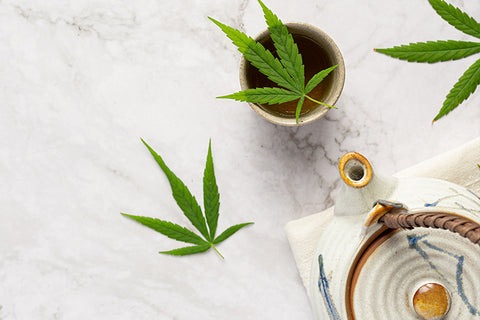Sustainable fashion – the New Trend that is paving its way in the thoughtful world. As we grow to be more eco-friendly humans, it is necessary to adopt and accept the changes in the trend and the transformation of various fashion outfits for a better planet. It is necessary to make conscious choices easier and be aware of sustainable fashion fabrics for a better revolution and an eco-conscious environment to live in.
One should be mindful before adapting to the changes from fast fashion to sustainable fashion in order to grow in the New World of Fashion outfits. We should know the new words to define, different processes to understand, various certification schemes to become familiar with, and accept the changes of this new trend.
Sustainable fashion can be clearly said as a combination of various fluid facets, which includes ethical business practices, supply chain transparency, minimal impact policies, give-back programs, and, most important of all, the sustainable materials that make up our ethical wardrobes.

WHY SHOULD ONE ACCEPT ECO-FRIENDLY FABRICS?
The need for eco-friendly fashion outfits arises with the damage being caused due to fast fashion. According to statistics, more than $500 billion of value is lost every year due to clothing underutilization and the lack of recycling, according to the Ellen MacArthur Foundation, which is a huge amount. The destruction caused is more than imagination for the planet.
It is also an important parameter to wonder and understand that fabric choice directly affects the raw material sourcing (farming and petroleum drilling impact), material processing (chemicals needed to turn it into fibre), and end-of-life prospects (ways a garment can be disposed of) like can it be recycled or composted. That is the major reason why one must be cautious before choosing the fabric and outfits!!!
Another matter of concern is that when it comes to pollution, the fashion industry is one of the largest contributors in the world .
It is disastrous for many sectors. It hinders the environment and the materials that make up the fabrics used directly and contributes to water resources, microplastic pollution, greenhouse gas emissions, soil degradation, rainforest destruction and lastly, landfill waste of dangerous proportions.
It is a fact that sustainable and ethical fashion is started with the fabric. On the positive side, environmentally friendly fabrics are trending and are easy to find — all you need is an appropriate place to search for them. Most fashion brands have started adopting, changing and shaping outfits in ethical ways. The aware crowds are promoting these practices and actions that are not only good for people and the planet.
With that in mind, here's a face-off of 3 important sustainable fashion fabrics that brands are using for manufacturing clothing for the welfare of the planet and resources. With the face-off, we will get an idea about the key points of these fabrics that may change the game.

ORGANIC COTTON
Organic cotton is one of the most natural fabrics used in outfits. It is mostly intended to be taken care of and grown without pesticides and synthetic fertilizers. Moreover, it is also manufactured and processed with no chemicals as a safety measure for the planet and resources.
It is predicted that organic cotton farming uses 62% less energy and 88% less water than conventional cotton that is far less, surprisingly, less than one of the single dirtiest crops around.
Following are some of the certifications used with sustainable and ethical cotton that proves that organic cotton is the life of sustainable development and describes us that organic cotton can be grown:
- without any chemicals or machine harvesting,
- It is processed without any chemicals leaving the final garment chemical-free.
- It is eco-friendly and less damaging when decomposed.
- Other pertinent certifications ensure fair pay and safe conditions for farmers as these products are not being exposed to chemicals in the field to the huge disastrous component in that regard.
Organic clothing brands use this fabric in just about every sector of fashion outfits: organic bras, organic mattress protectors, organic maternity clothes, organic baby clothes and much more.
Certifications: USDA-Certified Organic, Global Organic Textile Standard (GOTS), Organic Content Standard (OCS), Better Cotton Standard, Fair Trade, Bluesign, and Oeko-Tex 10.

ORGANIC HEMP
Hemp is yet another eco-friendly natural fabric that helps the ecological life of the planet. This sustainable fabric is high-yielding; its growth is healthy for the soil as it undergoes phytoremediation. It also requires much less amount of water than cotton. This product is useful for environmental benefits. One of the main considerations of these fabrics for your outfits is that it's a carbon-negative raw material. It basically absorbs CO2 from the atmosphere instead of emitting it.
As the fabric has enormous benefits, for example, being naturally sun protective and antimicrobial, it is great for the environment and is difficult to grow, hemp tends to be slightly more expensive as compared to other sustainable organic fabrics, but this fabric is expected to be seen more in the coming future.
Certifications & Standards: USDA-Certified Organic, Global Organic Textile Standard (GOTS), Organic Content Standard (OCS), Oeko-Tex 100, and Bluesign.
Key Benefits of Hemp Clothing.
- The fabric is a Carbon Warrior
- It utilizes less Water Without Polluting the Water
- The Soil Loves Hemp!
- It needs less land to Grow
- It is Antimicrobial & Durable
- The fabric usually softens and become more comfortable with time
- It saves you from UV radiations
- One of the Strongest Natural Fibre
TENCEL
LYOCELL, also known as TENCEL, the trademark name of the fabric given to it by Austrian manufacturer Lenzing, is a semi-synthetic material, or cellulosic, fabric that has been quite reputed clothing fabric popular in the sustainable fashion world.
Tencel fabric is an exclusive eco-friendly fabric that is a great source of development of environmentally sustainable textiles. Tencel is both a natural, artificial fibre made with wood pulp from sustainable tree farms; Tencel textiles are made through nanotechnology in an award-winning closed-loop process that recovers or decomposes all solvents and emissions.
It's generally produced from the pulp of eucalyptus trees, which doesn't require much of our water resources and pesticides. In the case of the TENCEL™ fabric production, only sustainably managed forests are used.

Certifications & Standards: Oeko-Tex 100, Forest Stewardship Council
Key Benefits of Tencel Fabric
- The fabric is versatile and durable
FINAL THOUGHTS ON SUSTAINABLE FABRIC TEXTILES
Unsustainable or fast fashion is the main reason for the poor fabric choice. Many materials that make your clothing not only harm humans or animals (often both) but also the environment in deadly ways. Not to mention, they release harmful chemicals and microplastics into our environment for huge numbers of years (sometimes in hundreds).
The best option to control all of these activities is filling your wardrobes with many eco-friendly fabrics that can make a stand for a better world.


















































